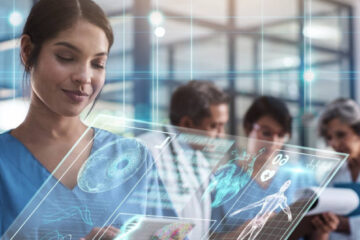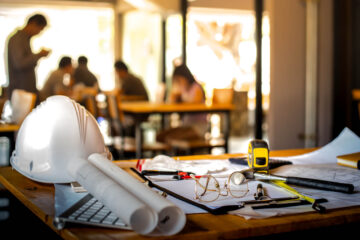Imagine a car crash that has just happened— twisted metal, shattered glass, and the lingering smell of burnt rubber. But there’s a team of experts there, carefully examining everything. They’re trying to figure out exactly what happened.
In many cases, accident reconstruction can help understand what went wrong and ensure everyone gets fair treatment.
In this blog post, we’ll explain how accident reconstruction works. We’ll talk about the science behind it and the different kinds of evidence used. We’ll also discuss the role of experts and how their findings can affect your case.
The Science Behind the Accident Reconstruction
At its core, accident reconstruction relies on the fundamental laws of physics. Experts use principles of motion, momentum, and energy to analyze the forces at play during the collision. Think of it like a detective story. The size and weight of the vehicles, the angle of impact, and the speed they were traveling all factor into how the collision unfolds.
By applying these principles, experts can calculate things like impact speeds, vehicle trajectories, and even where occupants were positioned at the moment of impact. This scientific approach is crucial for a Tampa car accident lawyer to build a strong case.
Data Collection and Analysis
Accident reconstructionists meticulously gather data from various sources, including.
Vehicle Damage
The type and extent of damage to a vehicle can provide crucial clues about the collision. For example, the location of the damage, such as a crumpled front end or a crushed side panel, can indicate the direction of the impact. The severity of the damage can also help determine the speed of the vehicles involved.
Skid Marks and Tire Tracks
Skid marks and tire tracks left on the road can be invaluable in accident reconstruction. The length of skid marks can be used to estimate the speed of a vehicle before braking. The direction of the skid marks can reveal the path a vehicle took before the collision. Tire tracks can also provide information about the vehicle’s steering input and the driver’s reaction time.
Witness Statements:
Eyewitness accounts can provide insight into the sequence of events leading up to the accident. Witnesses may be able to describe the vehicles involved, their speed, the direction they were traveling, and any unusual actions taken by the drivers.
Black Boxes (EDRs)
Many modern vehicles are equipped with Event Data Recorders (EDRs) that capture critical data like speed, braking, and airbag deployment in the moments before and during a crash.
Once this data is collected, experts use specialized software to create computer simulations and animations, allowing them to recreate the accident and test different scenarios to determine the most likely cause. This analysis is often essential for a car accident attorney in Tampa to demonstrate what actually occurred.
Types of Evidence
To figure out what happened during a crash, experts rely on several types of evidence. Here’s a look at the key pieces they use.
Police Reports
The police report includes important information like the location of the accident, road conditions, and sometimes initial observations about who might be at fault. It’s an important part of the evidence.
Photos and Videos
Photos and videos from the scene can show vehicle positions, road conditions, and damage. They provide a visual record that can be analyzed to understand the accident better.
Weather Conditions
Records of the weather at the time of the accident, including rain, fog, or ice, can explain how road conditions affected the crash. Weather data helps in understanding if visibility or road grip was compromised.
Vehicle Maintenance Records
Checking the maintenance history of the vehicles involved can show if any mechanical failures contributed to the accident. Poorly maintained brakes or tires, for example, might be a factor.
GPS Data
GPS systems in vehicles or smartphones can track the route and speed leading up to the crash. This data helps verify the movements of the vehicles involved and reconstruct their actions.
Traffic Camera Footage
Surveillance footage from traffic cameras can capture the accident and provide a clear view of how it unfolded, including the movements of all involved vehicles.
Who are the Experts Behind the Reconstruction
Accident reconstruction is a complex field that requires specialized knowledge and expertise. Let’s meet the key players involved.
Accident Reconstructionists
Accident reconstructionists are highly trained professionals with expertise in physics, engineering, and accident investigation. They use scientific methods and specialized software to analyze evidence, create simulations, and ultimately recreate the accident scene.
Other Experts
Depending on the complexity of the accident, other experts may be called upon to provide their specialized knowledge. These may include.
Engineers
Engineers can examine the design of the vehicles involved in the accident. They can look for any flaws or defects that might have contributed to the crash. Resources even share that engineers can also analyze the structural integrity of the vehicles to see how they held up during the impact.
Medical Professionals
Doctors and nurses can examine the injuries of the people involved in the accident. They can help to determine the severity of the injuries and how they might have affected the person’s ability to drive or react to the situation.
Meteorologists
Meteorologists can provide information about the weather conditions at the time of the accident. This can be important because bad weather can make it more difficult to drive and can contribute to accidents. The collaboration of these experts ensures a thorough and accurate reconstruction of the accident.
How Accident Reconstruction Impacts Your Case
Here’s how it can affect your case.
Determining Fault and Liability
Accident reconstruction helps pinpoint who was at fault for the accident. This information is crucial in determining liability and who should be held responsible for damages.
Assessing Damages
Accident reconstruction not only determines fault but also evaluates the full extent of damages, including injury severity, ongoing medical needs, lost wages, future earning potential, and property damage. This comprehensive assessment ensures fair compensation for your losses.
Strengthening Your Case
By providing a clear and objective analysis of the accident, accident reconstruction can strengthen your case. It can help to counter claims made by the other party and provide compelling evidence to support your position.
Conclusion
When a car accident happens, it can be a confusing and stressful time. Accident reconstruction is a process that can help to shed light on what happened and provide clarity for everyone involved.
By carefully examining the evidence and applying scientific principles, experts can piece together the events of the accident. This can help to determine who was at fault, understand the cause of the accident, and assess the extent of the damages.




